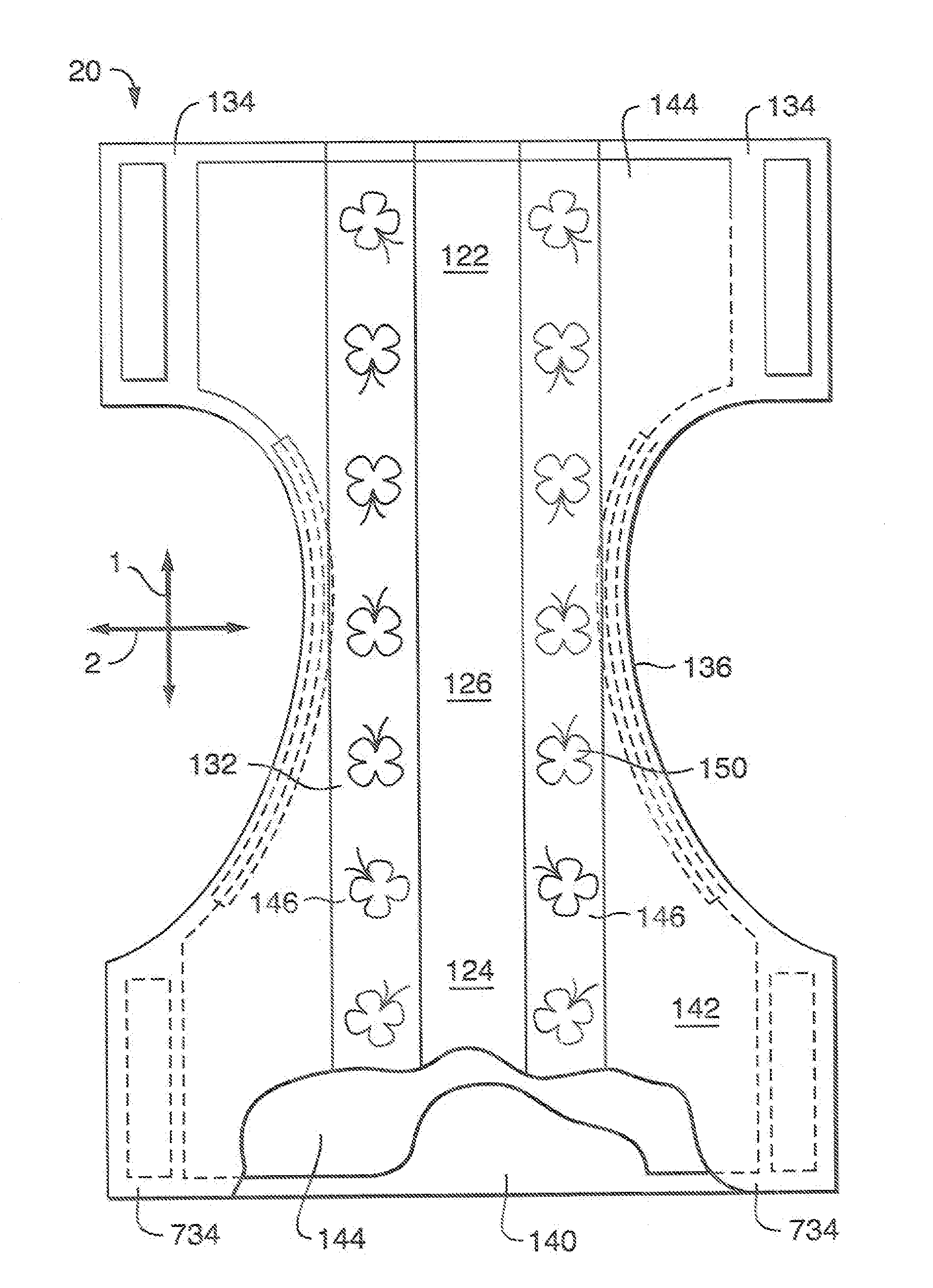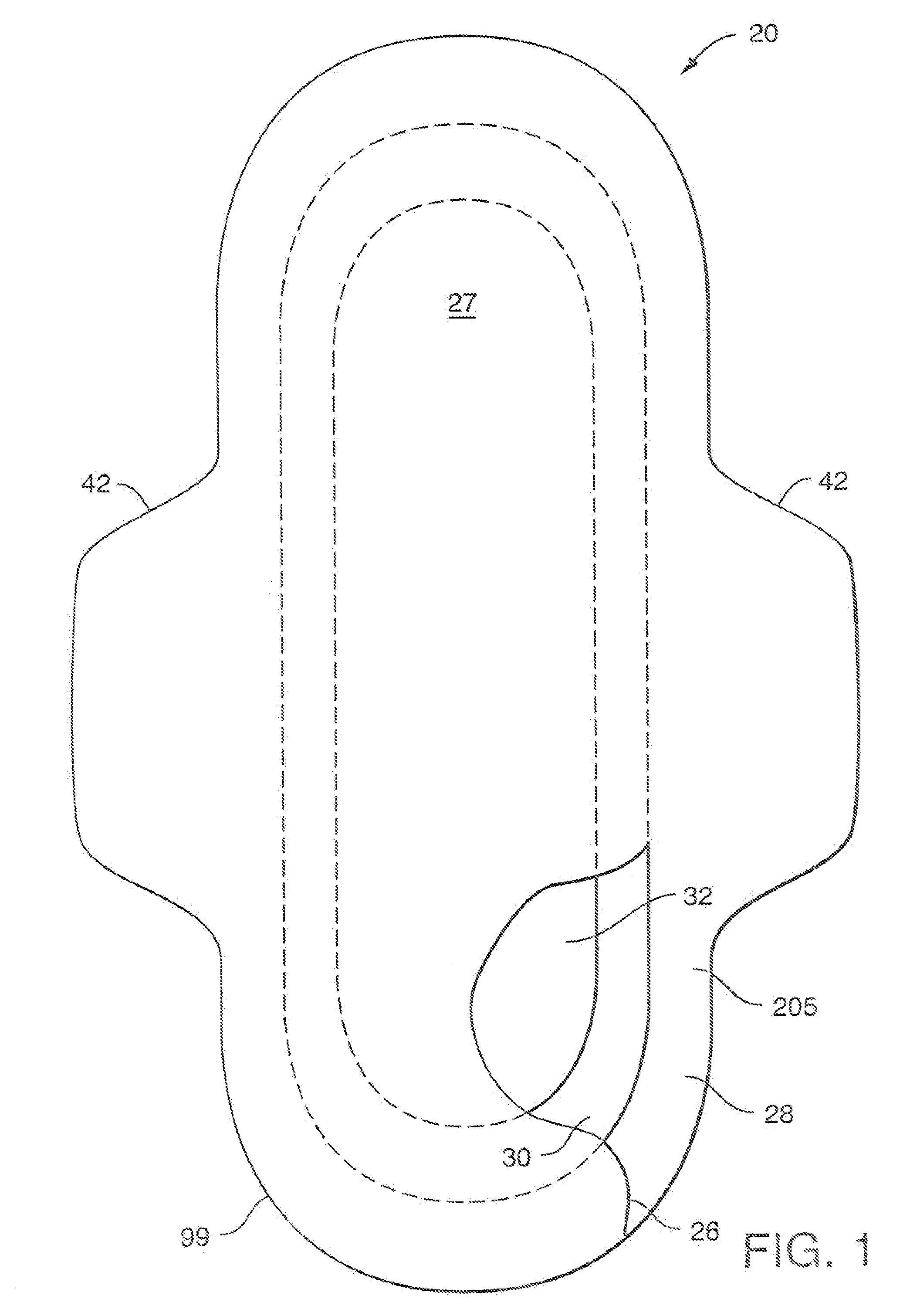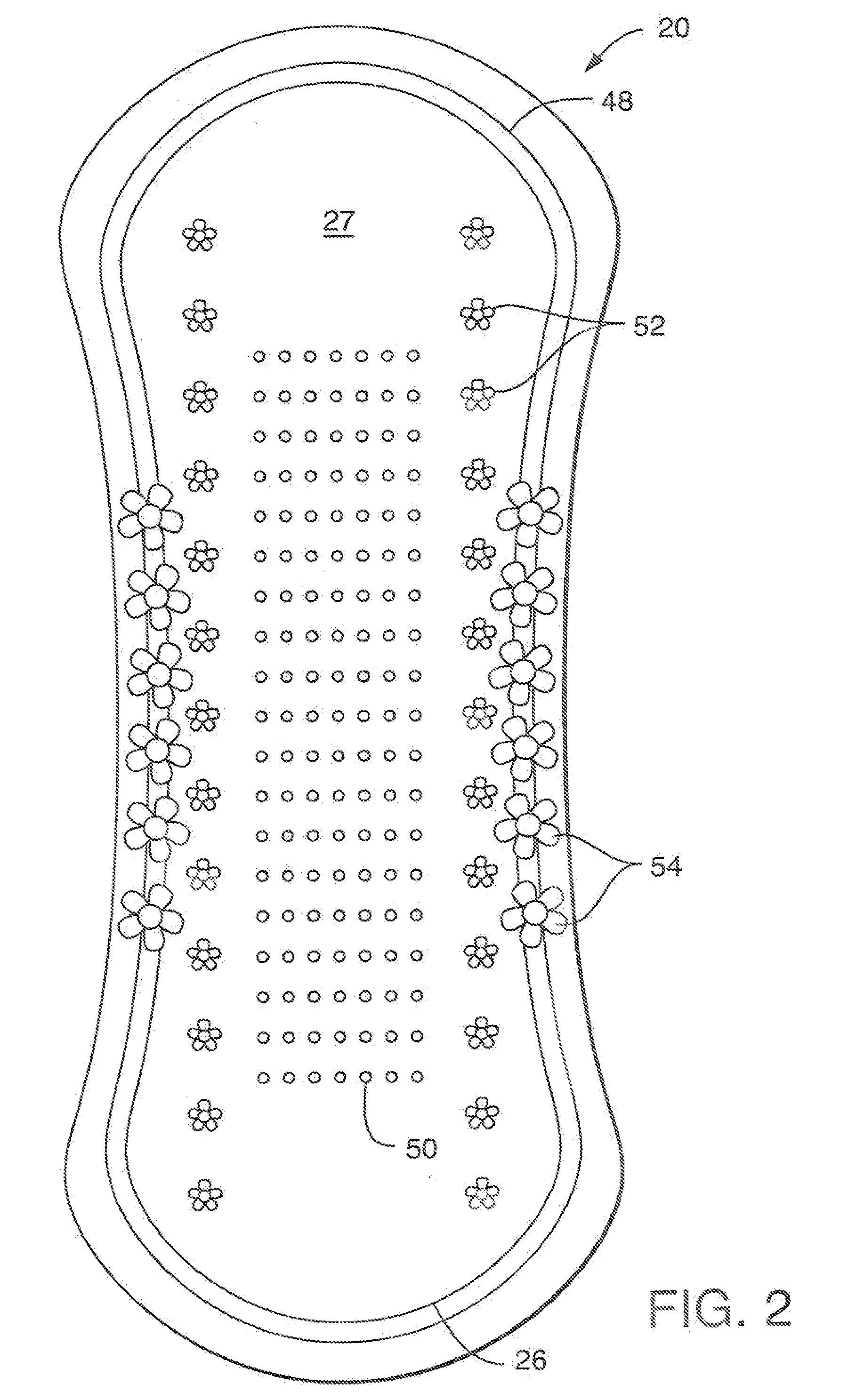Absorbent Article With Moisture Indicator
a technology of absorbent articles and moisture indicators, which is applied in the direction of bandages, sanitary towels, instruments, etc., can solve the problems of inconvenient use, inconvenient cleaning, and easy upset of vaginal balance, and achieve the effect of reducing the risk of infection for women
- Summary
- Abstract
- Description
- Claims
- Application Information
AI Technical Summary
Benefits of technology
Problems solved by technology
Method used
Image
Examples
example 1
[0111]An ink formulation A with bromocresol green and citric acid was printed on the inner side of a baffle layer of a feminine care pad. When the pad is unused or used but not contaminated with a significant quantity of sweat, the ink remains yellow. When liquid sweat is in contact with the color change indicator, the sweat facilitates neutralization reaction between the acid in the ink and calcium carbonate in the baffle layer to cause a rapid color change. The yellow color turns to green / blue. When the indicator becomes green / blue, the pad is discarded.
example 2
[0112]A moisture / temperature / exposure time sensitive ink containing 1% bromocresol green sodium salt, 8% citric acid, 4% benzethenium chloride, 50% nitrocellulose varnish and 37% ethanol was prepared. The ink was printed on a polyethylene baffle material, made breathable with calcium carbonate, to create a baffle sample. The sample was air dried. When dry, the ink appeared yellow.
[0113]One baffle sample was placed in an oven at 37° C., 90% humidity. The yellow turned green after two hours exposure, and then turned to blue after four total hours of exposure. When an identical sample was sealed in a plastic bag prior to being exposed to the noted condition, the yellow hue did not change.
[0114]Another baffle sample was used to replace the baffle of two HUGGIES brand new-born diapers. One diaper was placed in an oven at 37° C., 90% humidity. The yellow hue turned green after four hours exposure. When an identical sample was sealed in a plastic bag prior to being exposed to the noted con...
example 3
[0115]Preparation of humidity / temperature / exposure time sensing sticks are as follows. A sample of KIMWIPES brand nonwoven material was soaked in a solution of 1 g sodium carbonate and 20 ml water, and then air dried. A sample of yellow BIODYNE PLUS brand nylon-transfer membrane (available from Pall Corporation, Port Washington, N.Y.) was soaked in a solution of sodium bromocresol green (10 mg / ml), citric acid (10 mg / ml) in water, and then air dried. The KIMWIPES brand nonwoven fabric and the nylon-transfer membrane samples were laminated together using double-sided tape to create a humidity / temperature / exposure time sensor stick. The sensor stick was approximately 5 cm by 5 cm. The sensor stick was taped to the waist band of a HUGGIES brand diaper and placed in an oven at 37° C., 90% humidity. The yellow hue of the membrane turned green after three hours of exposure. When an identical sample was sealed in a plastic bag prior to exposure to the noted condition, the yellow hue did no...
PUM
| Property | Measurement | Unit |
|---|---|---|
| humidity | aaaaa | aaaaa |
| thickness | aaaaa | aaaaa |
| thickness | aaaaa | aaaaa |
Abstract
Description
Claims
Application Information
 Login to View More
Login to View More - R&D
- Intellectual Property
- Life Sciences
- Materials
- Tech Scout
- Unparalleled Data Quality
- Higher Quality Content
- 60% Fewer Hallucinations
Browse by: Latest US Patents, China's latest patents, Technical Efficacy Thesaurus, Application Domain, Technology Topic, Popular Technical Reports.
© 2025 PatSnap. All rights reserved.Legal|Privacy policy|Modern Slavery Act Transparency Statement|Sitemap|About US| Contact US: help@patsnap.com



